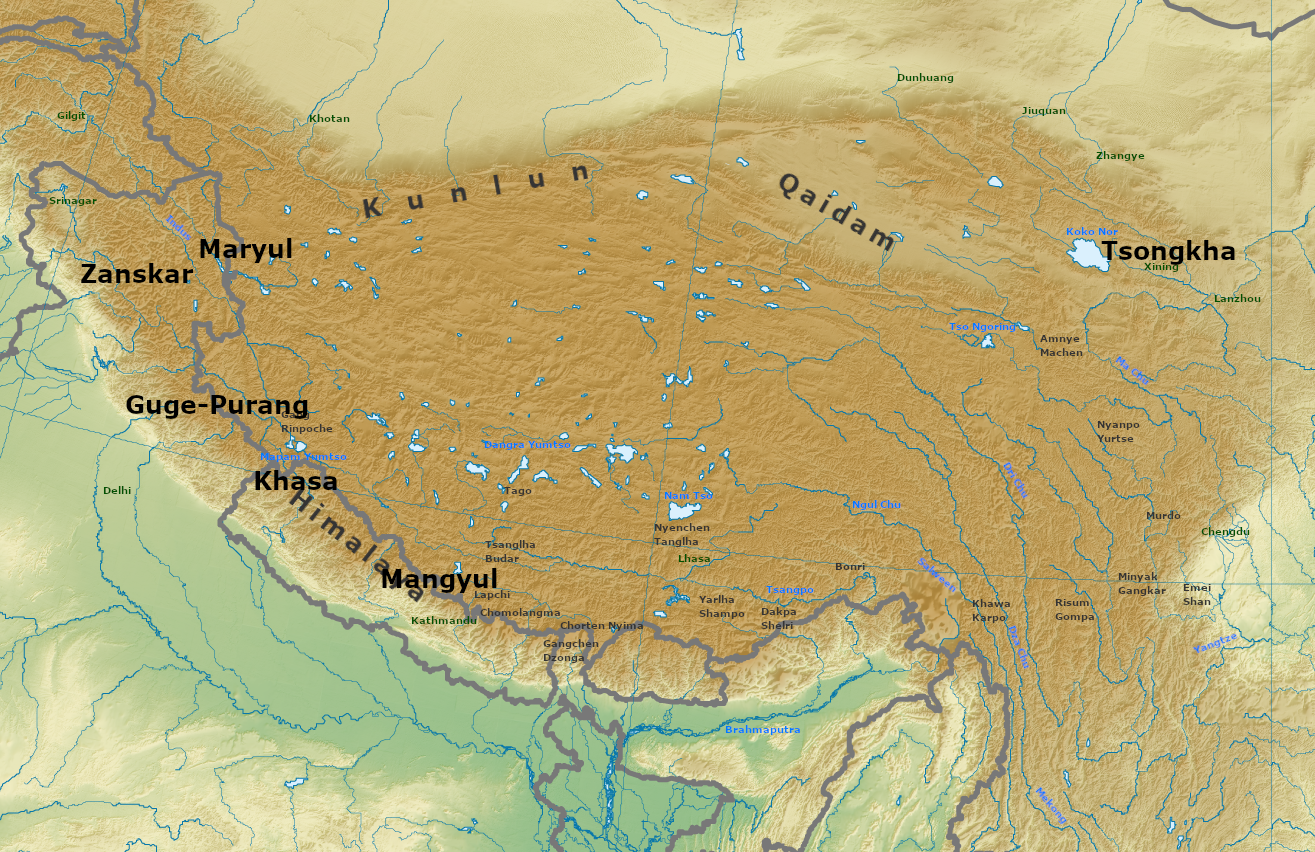|
Era Of Fragmentation
The Era of Fragmentation (; ) was an era of disunity in Tibetan history lasting from the death of the Tibetan Empire's last emperor, Langdarma, in 842 until Drogön Chögyal Phagpa became the Imperial Preceptor of the three provinces of Tibet in 1253, under the Yuan dynasty. During this period, the political unity of the Tibetan Empire collapsed following a civil war between Yumtän (''Yum brtan'') and Ösung (''’Od-srung''), after which followed numerous rebellions against the remnants of imperial Tibet and the rise of regional warlords. Civil war and the decline of imperial Tibet The last emperor of the unified Tibetan Empire, Langdarma, was assassinated in 842–846, by either a Buddhist hermit or a monk named Pelgyi Dorje of Lhalung. The assassination left two possible heirs, Yumtän and Ösung, to fight for the throne, leading to a civil war. The successors of Ösung controlled the region of Ngari, while the successors of Yumtän controlled the Ü region. The ... [...More Info...] [...Related Items...] OR: [Wikipedia] [Google] [Baidu] |
Era Of Fragmentation
The Era of Fragmentation (; ) was an era of disunity in Tibetan history lasting from the death of the Tibetan Empire's last emperor, Langdarma, in 842 until Drogön Chögyal Phagpa became the Imperial Preceptor of the three provinces of Tibet in 1253, under the Yuan dynasty. During this period, the political unity of the Tibetan Empire collapsed following a civil war between Yumtän (''Yum brtan'') and Ösung (''’Od-srung''), after which followed numerous rebellions against the remnants of imperial Tibet and the rise of regional warlords. Civil war and the decline of imperial Tibet The last emperor of the unified Tibetan Empire, Langdarma, was assassinated in 842–846, by either a Buddhist hermit or a monk named Pelgyi Dorje of Lhalung. The assassination left two possible heirs, Yumtän and Ösung, to fight for the throne, leading to a civil war. The successors of Ösung controlled the region of Ngari, while the successors of Yumtän controlled the Ü region. The ... [...More Info...] [...Related Items...] OR: [Wikipedia] [Google] [Baidu] |
